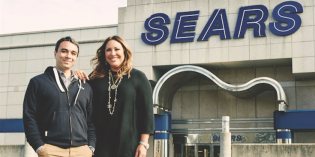![]() When it comes to creating high-impact executions for a brand’s digital campaign, centering a campaign around driving social media engagement has become a trendy and tired ask.
When it comes to creating high-impact executions for a brand’s digital campaign, centering a campaign around driving social media engagement has become a trendy and tired ask.
Knowing this, the decision for digital marketers is whether to hop on this bandwagon with an elaborate social media campaign, or to leverage high-impact creative digital ads to craft a brand story, and requires asking some tough questions. Furthermore, marketers must avoid having their judgment clouded by the hype that so often surrounds the social space when deciding on the best strategy to drive brand engagement.
 Is your brand innately social?
Is your brand innately social?
When we share socially, we are curating our lives for our audience. We’re Instagramming a meal at a cool restaurant or a pair of new designer shoes. We’re uploading a Facebook album of a holiday cookie swap or road trip. We’re tweeting a news article that makes us look clever and informed. Therefore, advertisers should ask themselves if there is a context in which their target audience would naturally name drop or take a photo with their brand. Or, does “begging” for shares to get on the latest internet trend risk coming across as lacking authenticity, late to the party and #desperate. For those advertisers that can’t make a strong case for themselves betting big on social, an interactive digital or native execution that allows for more brand-directed creativity might better suit their objectives.
Should you be controlling the conversation?
Advertisers are protective of their brand identities, and rightly so. Where a rich media, interactive digital ad can encourage engagement while giving the brand full control of the interactive possibilities, a social campaign that asks for audience participation forces advertisers to loosen the reigns, and the results can be mixed. Advertisers need to be aware that in adding social media engagement objectives to their campaigns, they are exposing themselves to the risks of real-time freedom of speech. Some brands can suffer at the hands of social media engagement and bounce back, while others cannot. Advertisers should be aware of the potential pitfalls of driving conversations around their brand and plan according to their risk tolerance level.
How valuable is social engagement to your brand?
Engagement exists on a scale from valuable to… not so much. It’s why we always hear the banner is dead; the engagement, a possible glance or an accidental click, is not particularly valuable to the advertiser or the user. Interactive and native ads are part of an evolution to combat this occurrence and reclaim value by giving users compelling reasons to engage, using visuals, content, video, gaming opportunities and more.
Basing a campaign around social media can seem like an obvious solution, as engagement is the name of the game in the digital space, but this engagement can be similarly ineffective in achieving marketing objectives, even with an elaborate, attention-grabbing campaign. In the social space it’s not just the user engaging with the brand. Rather, it’s the user engaging with the brand and their own audience of followers. This can be mutually beneficial; hence the blossoming of the influencer economy, but advertisers would be wise to approach social media knowing that users are often less invested in lifting a brand’s profile than their own.
Finding the right approach for your brand
The point here is not to argue against advertisers having a social media presence. It’s widely considered a must! It’s the new normal! But when brands are thinking beyond banners and trying to connect with target audiences in a high-impact, significant way, they must ask themselves if a campaign strategy that hinges on driving social engagement is the right move for them or if initiatives might be better achieved by pushing the creative envelope with innovative, engaging digital executions.









